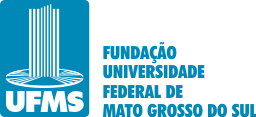Use este identificador para citar ou linkar para este item:
https://repositorio.ufms.br/handle/123456789/11617| Tipo: | Dissertação |
| Título: | “MANO, PEGA A VISÃO”: CARACTERÍSTICAS DA FALA DOS JOVENS CONTEMPORÂNEOS NO ENSINO MÉDIO E OS PROCESSOS CRIATIVOS QUE CONSTITUEM A SUA VARIEDADE LINGUÍSTICA |
| Autor(es): | Luclecia Silva de Almeida Matias |
| Primeiro orientador: | Patricia Graciela da Rocha |
| Resumo: | Ao longo de quase duas décadas lecionando a disciplina de Língua Portuguesa nas séries finais do Ensino Fundamental II e, em especial, no Ensino Médio, tenho observado a forma de falar dos jovens: são expressões que de repente surgem e não muito tempo depois deixam de ser usadas. Em meu locus de atuação profissional testemunhei um ciclo de surgimento, alastramento, desaparecimento e invenções de termos, expressões, gírias, siglas, palavras conhecidas que ganham novos significados… tudo sendo incorporado ao repertório linguístico dos alunos, por esta razão considerei pertinente estudar a variação linguística social, especificamente a presente na oralidade dos adolescentes. Este trabalho apresenta como tema, portanto, a fala dos adolescentes enquanto variedade linguística que se manifesta no ambiente escolar em suas interações de conversação e tem como objeto principal investigar as características da fala dos jovens contemporâneos no Ensino Médio – de uma Escola Estadual de Campo Grande – MS – analisando os processos criativos que motivam as variações linguísticas na fala dos alunos. Os objetivos específicos desta pesquisa consistem em: elaborar e aplicar, no primeiro ano do Ensino Médio, uma Sequência Didática a partir da temática “Variação Linguística”; fazer um levantamento das variantes linguísticas utilizadas pelos jovens participantes da pesquisa, por meio da aplicação da Sequência Didática nas aulas de Língua Portuguesa; identificar os processos linguísticos de criação de palavras ou expressões mencionadas por esses jovens e identificar variantes linguísticas utilizadas pelos pais e/ou avós dos estudantes participantes da pesquisa e as expressões correspondentes utilizadas pelos adolescentes que representam, possivelmente, uma variação ou mudança geracional. A geração dos dados se deu por meio da pesquisaação em duas turmas do primeiro ano do Ensino Médio, em uma escola da rede estadual de ensino da cidade de Campo Grande, MS. Embora o corpus tenha sido gerado em uma escola específica e os participantes sejam uma pequena parcela dos estudantes matriculados (cerca de 60 estudantes), entendo que esse grupo de jovens possa representar a comunidade de fala de adolescentes de uma forma geral, enquanto grupo social de uma mesma faixa etária, que apresenta características muito semelhantes em sua forma de falar. Ancorada nas perspectivas da Sociolinguística Variacionista proposta por Labov (2008 [1972]), a pesquisa apoia-se, ainda, nas reflexões de Bagno (2014) sobre as mudanças e variações da língua, na Pedagogia da Variação Linguística defendida por Bortoni-Ricardo (2004), na teoria da diversidade linguística, defendida por Soares (2017), e na valorização da diversidade na linguagem, adotada por Hooks (2019). Por meio da aplicação da Sequência Didática, identifiquei que a fala dos adolescentes se caracteriza por um repertório linguístico peculiar que identifica e diferencia o grupo social dos demais grupos, sendo este o resultado de diversos fatores extralinguísticos que interferem nos processos criativos das variantes presentes no vocabulário dessa comunidade de fala, como o fato de estarem inseridos numa sociedade em que prevalece a aceleração social e tecnológica, refletindo, por exemplo, no encurtamento das palavras. Além disso, a influências das mídias digitais, para a incorporação de memes no vocabulário dos jovens e estes carregam uma característica - a efemeridade. A influência da língua inglesa norte-americana também representa um fator relevante para a constituição do repertório linguístico dos adolescentes, resultando nos estrangeirismos entranhados nas falas desse grupo social. |
| Abstract: | Over almost two decades of teaching Portuguese Language in the final grades of elementary school and, in particular, in secondary school, I have observed the way young people speak: expressions that suddenly appear and not long afterwards are no longer used. In my place of work, I have witnessed a cycle of the emergence, spread, disappearance and invention of terms, expressions, slang, acronyms, familiar words that take on new meanings... all being incorporated into the students' linguistic repertoire, which is why I considered it pertinent to study social linguistic variation, specifically that present in the speech of adolescents. Therefore, the theme of this work is adolescent speech as a linguistic variety that manifests itself in the school environment in their conversational interactions, and its main object is to investigate the characteristics of the speech of contemporary young people in secondary school, analyzing the creative processes that motivate linguistic variations in students' speech. The specific objectives of this research are: to develop and apply, in the first year of secondary school, a didactic sequence based on the theme “Linguistic Variation”; to survey the linguistic variants used by the young people taking part in the research, through the application of the didactic sequence in Portuguese language classes; to identify the linguistic processes used to create words or expressions mentioned by these young people and to identify linguistic variants used by the parents and/or grandparents of the students taking part in the research and the corresponding expressions used by the adolescents which possibly represent a generational variation or change. The data was generated through action research in two first-year high school classes at a state school in the city of Campo Grande, MS. Although the corpus was generated in a specific school and the participants are a small portion of the students enrolled (around 60 students), I believe that this group of young people can represent the speech community of adolescents in general, as a social group of the same age group, which has very similar characteristics in the way they speak. Anchored in the perspectives of Variationist Sociolinguistics proposed by Labov (2008 [1972]), the research is also based on Bagno's (2014) reflections on changes and variations in language, the Pedagogy of Linguistic Variation defended by BortoniRicardo (2004), the theory of linguistic diversity defended by Soares (2017), and the appreciation of diversity in language adopted by Hooks (2019). Through the application of a Didactic Sequence, I identified that the speech of adolescents is characterized by a peculiar linguistic repertoire that identifies and differentiates the social group from other groups, which is the result of several extralinguistic factors that interfere in the creative processes of the variants present in the vocabulary of this speech community, such as the fact that they are inserted in a society in which social and technological acceleration prevails, reflecting, for example, the shortening of words. In addition, digital media has influenced the incorporation of memes into young people's vocabulary and these carry one characteristic - ephemerality. The influence of the North American English language is also a relevant factor in the constitution of adolescents' linguistic repertoire, resulting in the foreignisms ingrained in the speech of this social group. Keywords: linguistic variations; adolescent speech; secondary school. |
| Palavras-chave: | variações linguísticas fala dos adolescentes Ensino Médio |
| País: | Brasil |
| Editor: | Fundação Universidade Federal de Mato Grosso do Sul |
| Sigla da Instituição: | UFMS |
| Tipo de acesso: | Acesso Aberto |
| URI: | https://repositorio.ufms.br/handle/123456789/11617 |
| Data do documento: | 2025 |
| Aparece nas coleções: | Programa de Pós-graduação em Estudos de Linguagens |
Arquivos associados a este item:
| Arquivo | Tamanho | Formato | |
|---|---|---|---|
| DISSERTAÇÃO_VERSÃO_FINAL.pdf | 3,28 MB | Adobe PDF | Visualizar/Abrir |
Os itens no repositório estão protegidos por copyright, com todos os direitos reservados, salvo quando é indicado o contrário.

